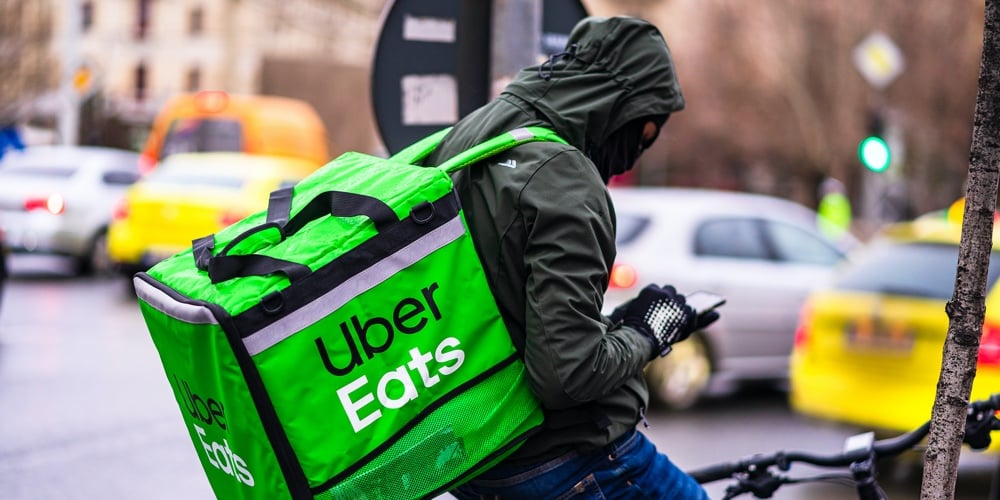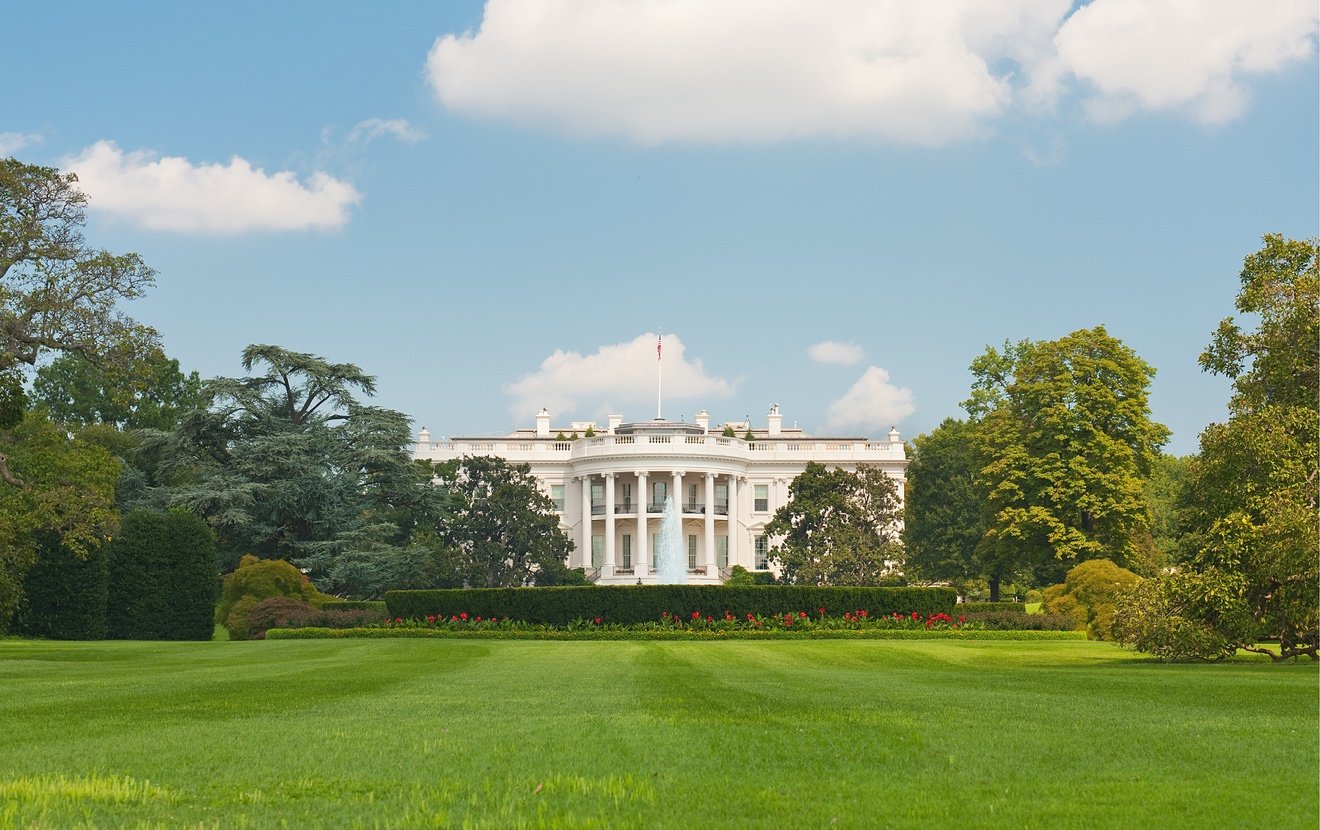Digital transformation. Post-COVID planning. Loan growth strategies. Generational marketing.
Those are all important topics. You’ve got plenty of resources for each.
But this article? It’s going to talk about something I guarantee is 100% new to you.
In fact, consider this the first time it has EVER been discussed within the credit union world.
Food. Yes, food. And your credit union. Along with members and your larger community. If this sounds crazy, you’re right. It’s also a peek into what could become a $1 Trillion industry. That’s a T, for trillion, in case it didn’t register the first time through.
It’s ok, you’re wondering where this is going, and how it could possibly connect to your credit union. I promise I’ll get there. First, let me introduce this concept, which, by the way, your Gen Z and Millennial relatives already use (whether they realize it or not).
The Delivery Shift
You know the basics of a restaurant, even if you haven’t been inside one in a while. There’s a building with seating areas, perhaps a bar, and a kitchen in “the back”. When you order from a waiter or that Ziosk device on your table, a ticket goes into the kitchen to prepare your food.
A short time later, you’ve got a piping-hot meal, fresh from no more than 50 feet away. It’s just as delicious as you remember, which is why you came back to this particular restaurant. The food is consistent and you trust their brand to deliver, even if you visit another location.
Of course, once the pandemic struck, we turned to take out and delivery. The food delivery segment surged 164% in 2020. Like other things, COVID accelerated transformation. Yet it was already on this track. Delivery has grown 300% faster than dine in over the past 5 years.
And most people hungry at home just opened up Yelp to call their favorite restaurant, right? Nope, they downloaded:
-
GrubHub (which acquired Seamless and Eat24)
-
Uber Eats
-
Postmates (which Uber acquired)
-
DoorDash (which had a huge 2020 IPO)
-
Drizly (for alcohol, another service Uber acquired)
If you’ve been on these apps before, you know how simple they make getting food to your front door. They’re also surprisingly good at making “what you want” as important as “where it’s from”. When you’ve got a burrito craving, it makes sense to filter by fillings rather than source.
Ordering food for most now means opening a delivery app and not a specific restaurant’s site. If this concept sounds silly to you, rest assured, you’re currently not their target audience. But you might be after finishing this article.
Because that list of nearby restaurants and food items showing in Uber Eats has a secret: Some of those restaurants don’t exist.
Ghost Kitchens
No, this isn’t some Halloween Horror Nights event. A ghost kitchen is simply “a cooking facility that produces food only for delivery with no dine-in or customer facing areas.” You may recall commissary kitchens, where you can “set up shop” in a fully-prepped cooking space.
Ghost kitchens are similar, except they can also be part of another, already operating, restaurant. Say you own a taco stand and want to bring in a bit more revenue. You could consider preparing pizzas under a different, delivery-only, brand.
Many places are doing this now, especially as dine-in activity collapsed throughout 2020.
However, this isn’t a new concept. There are currently 1,500 ghost kitchens in America. Globally, it’s caught on to a larger degree, with over 7,500 in China and 3,500 in India. As mentioned earlier, projections put it at a $1 trillion industry in less than a decade.
How do you promote a menu which has no physical location to visit? Even food trucks stop to sell their goods! Delivery apps. When scrolling on your phone, it doesn’t matter if the “restaurant” has a location, just that they can deliver your wet burrito in 32 minutes.
Ok, so we recognize the enormous growth in food delivery apps, the expansion of ghost kitchens, and how seamlessly they fit together. Where, you are probably thinking, is the credit union connection?
Enjoy your side of guac and chips as we prepare the main course.
Ghost Franchises
Here’s where it gets interesting.
Say you’re a YouTube celebrity with millions of followers (this is absolutely a thing), and you want to promote a new way to monetize your audience. Product placement and paid promotions are fine, but they’re old-school. You want something fun. Something tasty.
What if you could open a national restaurant chain with items fully to your branding, and you’d earn a piece of every food sale? Oh, and you wanted to do it with minimal investment. Sounds crazy, right?
Not anymore. Today, you’d work with a ghost kitchen consultant to set up a ghost franchise. Together, you come up with the restaurant name, its food items, and on-brand descriptions and graphics. Then, you food test and create standardized recipes. Finally, distribution.
Your consultant helps recruit a regional or national network (depending on your goals) of restaurants and ghost kitchens willing to make your food. These are often large chains, so one agreement can bring in hundreds of locations. And, there is no step 3.
You’re A (Delivery) Restaurateur
In that entire footprint, your “restaurant chain” goes live in delivery apps. Overnight, your fans can order your burger in 95% of metro areas, sharing their response videos about it the next day. And everyone using their existing apps sees a “new restaurant” in their area.
This isn’t a hypothetical. MrBeast, a YouTube star with over 50 million followers, opened MrBeast Burger in just this fashion. He’s not alone. Celebrities as wide-ranging as existing restaurant owners to reality stars follow this model.
Guy Fieri has 130 regions where you can take the virtual drive to Flavortown Kitchen. Mariah Carey (yes, that one) has a whole line of cookies available in 39 states. For the Jersey Shore fans, you can chew on Pauly D’s Italian Subs.
With a bit of planning, anyone can launch a food brand. And, since it’s fully virtual, you can evolve it as needed. So what if you wanted to do more than just fill stomachs? Is it possible for this model to improve communities?
The Credit Union Food Connection
Bank, borrow...bite? Eating isn’t often associated with your financial institution. Unless it’s a lunch-and-learn session or department pizza party (remember those?), business revolves around dollars and members, not dining.
The community and member-facing side of your credit union exudes financial empowerment. You aim to lift people up through your products and services, and don’t need me to explain that aspect of your mission. But what’s a major challenge? Communicating this effort to the public.
What if your credit union started a restaurant? Backed by ghost kitchens, you could build a brand that connects back to your own, raising awareness and excitement for your initiative.
The menu items could have names relating to savings or financial goals. Descriptions could include witty connections to local charities and member success stories. If this sounds unfeasible, you haven’t let your marketing team run wild.
An Order of Community Improvement with a Side of Financial Education
By using the ghost franchise model, you could open an app-visible restaurant chain across your entire member footprint. Besides traffic from regular users of delivery apps, you would promote it through your social media and website (especially mobile banking...engage them on the same device!).
Sure beats another message about how your rates are the lowest in town. Or that a HELOC with your credit union is a great decision. I guarantee your members are not expecting to hear about daily specials...of food! Start your order now!
With items advancing financial literacy and the whole model promoting your brand, what else could you do for the community? Remember the references to local charities (or your foundation efforts)? They can be more than just mentions. Think real giving.
Your model can accommodate a portion of sales to support these charities. Share quarterly updates with members about how their eating habits made a real difference. Tell them how many backpacks you got for underprivileged kids, or how many meals they helped you serve at a local food bank.
Most importantly, ensure your members feel part of the effort. Thank them for supporting the community with every order. Tell them exactly what their order provided for a partnered charity.
Remember all those discussions about how Millennials and Gen Z like (and tell friends about) companies who are genuine in their mission? Show them on their turf.
Food: The Next Credit Union Frontier?
Every day, you read articles warning that without innovation, your credit union will struggle to succeed. Normally, they suggest advancing your digital transformation, and some promote their own products. Yet all of them reinforce your role as a banking establishment.
What if you could blur what your community thinks it means to be a credit union? Sure, you provide tools to advance financial literacy and empowerment. But you also have a killer loaded potato, stuffed with informative nuggets about building a savings strategy and the knowledge you’re helping support those less fortunate.
Who’s hungry for some real change?







